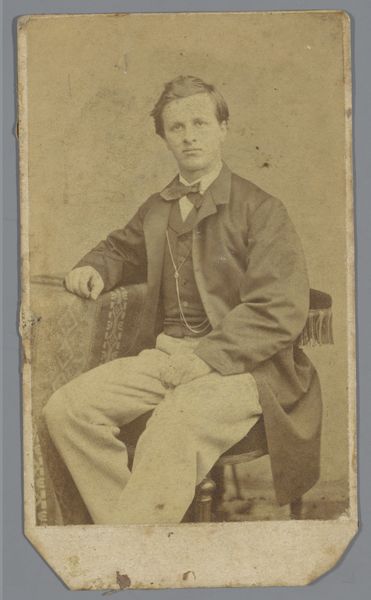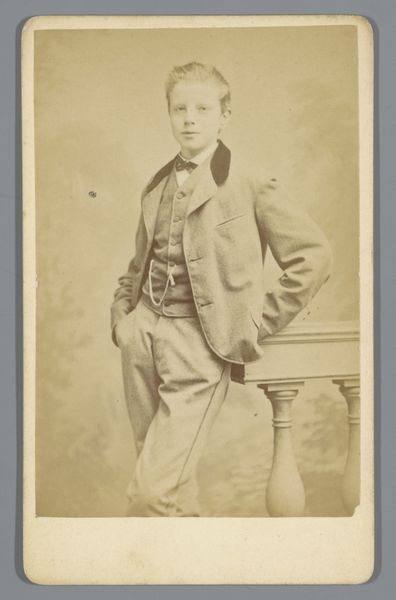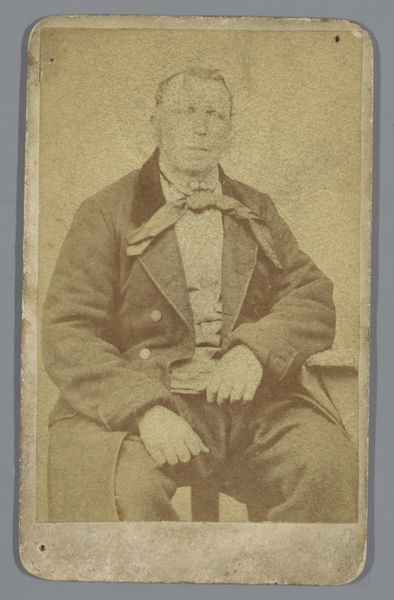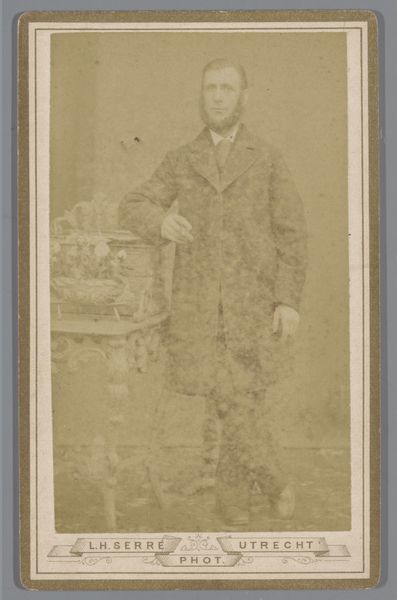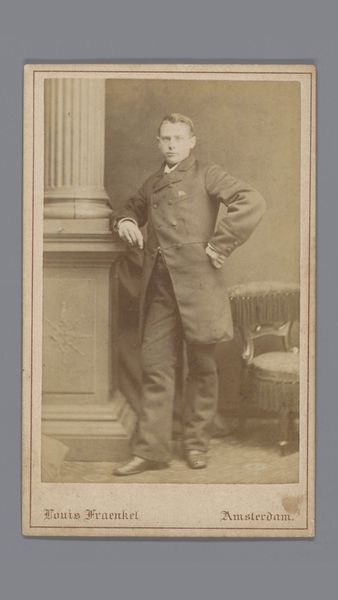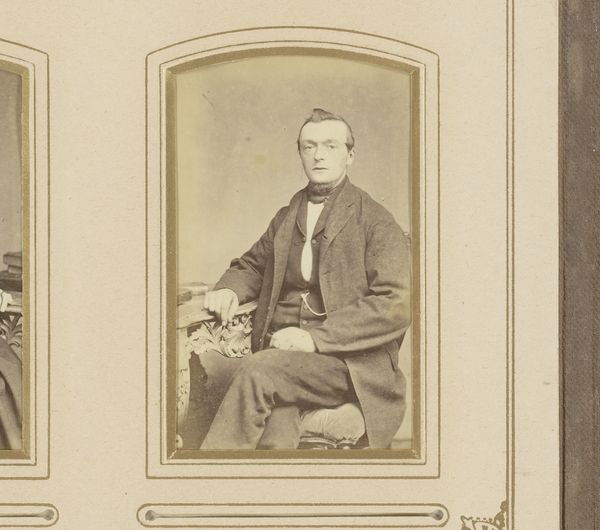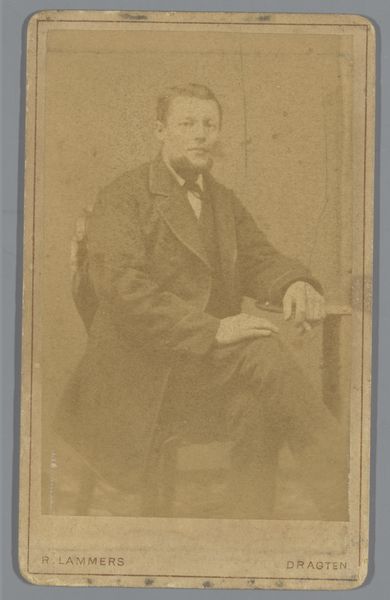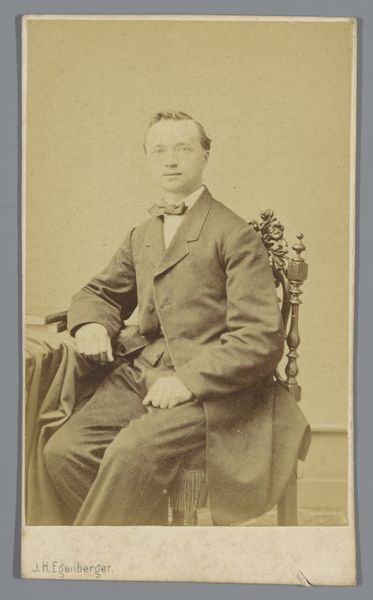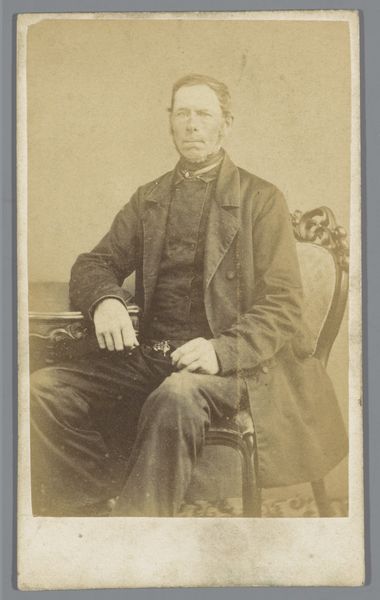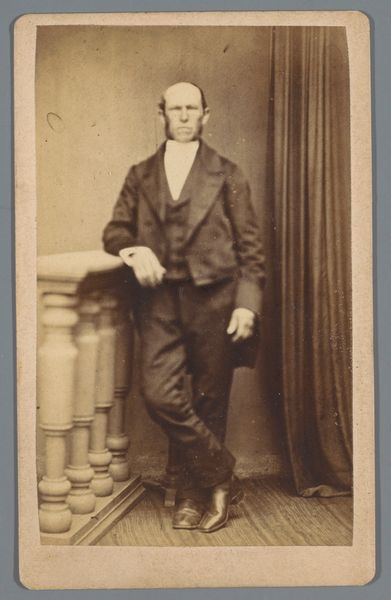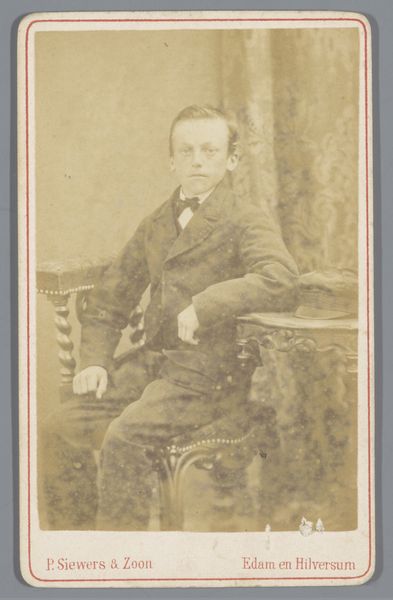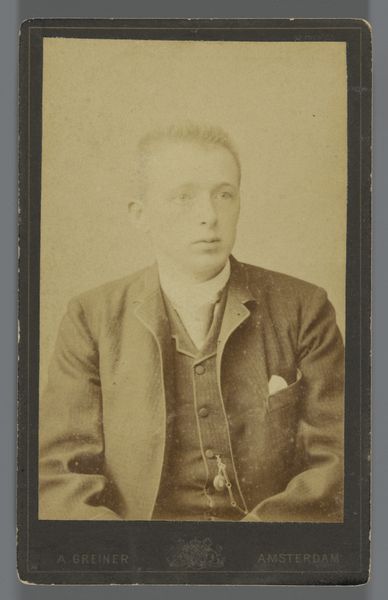
photography
#
portrait
#
photography
#
historical fashion
#
genre-painting
#
realism
Dimensions: height 105 mm, width 63 mm
Copyright: Rijks Museum: Open Domain
Curator: This dignified gentleman greets us from a photograph entitled "Portret van een onbekende zittende man," dating from the period 1880 to 1886, credited to the Gebroeders Sanders. Editor: An immediate impression – a rather serious, perhaps contemplative mood conveyed through sepia tones. The composition is classical, balanced but I'd love to learn more about its cultural context. Curator: Indeed, note how the artist has strategically deployed tonal variation; observe the contrasting textures in his clothing, the jacket's fabric versus the softer tones of his bow tie, it constructs depth, doesn't it? The interplay of light and shadow shapes the form, highlighting planes and creating definition. Editor: And he is unidentified, a man perhaps keen to represent himself in ways that spoke to his time. Think about the rise of the middle class during this era; having your photograph taken was a deliberate, almost defiant declaration. Curator: An astute observation. His very pose– relaxed yet upright, arm casually resting on what looks to be a carved element of a wooden chair–contributes to the overall construction of social positioning and personal aesthetic. The frame itself contains and compresses the narrative in calculated doses of proportion and line. Editor: To think that now such images exist en masse digitally—the social implications for our age, are vastly different. Curator: Absolutely, although it's also interesting to view this from the formal lens of realism, considering its dependence on representing the figure in front of the lens, but in constructed reality of a photograph portrait. Editor: Yes, photography democratised portraiture for a much wider sector of society; perhaps in doing so helped alter or shift the aesthetic requirements in terms of how citizens were recognised in the national conscience? Curator: Fascinating points indeed. This small, unidentified portrait, through its play of light and shadow, also presents a broader societal context. Editor: A tangible moment captured from history revealing larger meanings if we stop to examine it carefully.
Comments
No comments
Be the first to comment and join the conversation on the ultimate creative platform.
